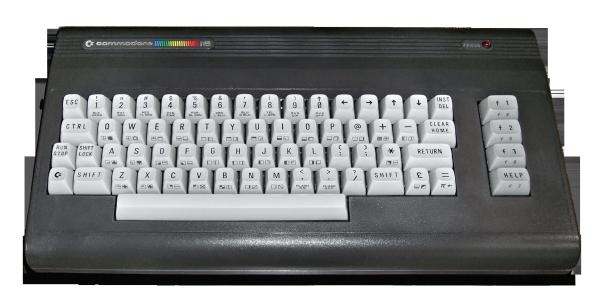
Commodore 16
Commodore 16 Specifications
| Manufacturer: | Commodore Business Machines |
| CPU: | MOS Technology 7501 @ 0.89 MHz / MOS Technology 8501 @ 1.76 MHz |
| Memory: | 16 KB RAM + 32 KB ROM |
| Graphics: | TED (320 × 200, 121 colors) |
| Sound: | TED (2 channels, 4 octaves + white noise) |
| Medium: | ROM cartridge, Compact Cassette |
| Display: | 320x200, 320x160 (with 5 lines of text), 160x200, 160x160 (with 5 lines of text) |
The Commodore 16 is an 8-bit home computer that was released by Commodore International in 1984. It was designed to be a low-cost alternative to the popular Commodore 64 and targeted at the entry-level market. The Commodore 16 features a MOS Technology 7501/8501 CPU running at 0.89 MHz, 16 KB of RAM, and 16 KB of ROM. It also has a built-in BASIC interpreter, which allows users to write and run programs in BASIC. Despite its low cost and intended target market, the Commodore 16 did not sell as well as expected, mainly due to its limited capabilities compared to other computers available at the time. However, it did pave the way for future low-cost computers like the Commodore Plus/4 and the Amstrad CPC.
The C16 and C116 belong to the same family as the higher-end Plus/4 and are internally very similar: 24 to it (albeit with less RAM – 16 KB rather than 64 KB – and lacking the Plus/4's user port and Three-Plus-One software). Software is generally compatible among all three provided it can fit within the C16's smaller RAM and does not utilize the user port on the Plus/4.
While the C16 was a failure on the US market, it enjoyed some success in certain European countries and Mexico.
The C16 was intended to compete with other sub-$100 computers from Timex Corporation, Mattel, and Texas Instruments (TI). Timex's and Mattel's computers were less expensive than the VIC-20, and although the VIC-20 offered better expandability, a full-travel keyboard, and in some cases more memory, the C16 offered a chance to improve upon those advantages. The TI-99/4A was priced in-between Commodore's VIC-20 and Commodore 64, and is somewhat between them in capability, but TI was lowering its prices. On paper, the C16 was a closer match for the TI-99/4A than the aging VIC-20.
Commodore president Jack Tramiel feared that one or more Japanese companies would introduce a consumer-oriented computer and undercut everyone's prices. Although Japanese companies would soon dominate the U.S. video game console market, their feared dominance of the home computer field never materialized. Additionally, Timex, Mattel, and TI departed the computer market before the C16 was released.